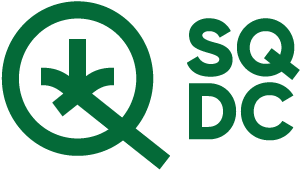Transaction security
Payment service
The SQDC.ca payment service allows you to make on-the-spot purchases by payment card. This service guarantees a high level of security, reliability and efficiency. The SQDC.ca website has a number of features that ensure your financial transaction is processed securely. For a full list of accepted payment methods when buying online on SQDC.ca, please see the Terms of sale for online purchases.
Here are the main features:
- secure transmission of the credit card number to the payment server, which, for authorization purposes, redirects the transaction to the institution that issued the card;
- encryption of the information sent over the Internet; and
- immediate processing of the request to authorize the amount of the purchase.
Payment form
When you use the SQDC payment form, the information retrieved from your payment card is transmitted over the Internet using the SSL (Secure Socket Layer) protocol. This protocol used by your browser enables secured transmission of information via the Internet to the payment service.
Security information
The SQDC.ca payment service has a full set of security features.
Encryption and browsers
Encryption consists of turning clearly worded text into unintelligible text (a cryptogram) using cryptographic techniques such as algorithms and a key. Access to a secret key is necessary to decode the information. Cryptographic systems use a variable length key. Here is how you can be sure the information is being transmitted securely:
- Depending on your browser, a small locked padlock appears in either the address bar or status bar when you are connected to a secure website;
- When the session switches to encrypted mode, you will see in the address bar that the address http://sqdc.ca becomes https://sqdc.ca, indicating that the SSL (Secure Socket Layer) protocol is being used to transmit information securely.
Cryptography
Cryptography is the science of encrypting messages so that the content can be understood only by the designated recipient. Encryption in various forms has been used since time immemorial. Today, encryption is used to transmit digital data via a computer network or, increasingly, to ensure the confidentiality of important files stored on your computer. Clearly worded text is turned into unintelligible text using complex mathematical algorithms and cryptograms known as keys. A reverse operation is applied for decryption. Security experts foresee a growing use of encryption for non-classified computer data. Encryption can be either symmetrical or asymmetrical. In symmetrical encryption, the same key is used for both encrypting and decrypting. The sender has to convey the key to the recipient with the utmost security. Asymmetrical encryption requires one key for encrypting and another for decrypting. Decrypting requires knowing both keys, as one cannot be deduced from the other. To send an encrypted message, the sender uses the encryption key, commonly known as a public key. The recipient can only decrypt the message by using a decryption key, commonly known as a private key.
No keys change hands when this method is used. However, it requires more time than symmetrical encryption. The SQDC.ca payment service uses asymmetrical encryption, which ensures your payment card number is transmitted securely over the Internet.
Paying for your purchases
At the time of payment, SQDC.ca displays a form on which you are asked to enter your payment card number, the expiry date (month/year) and the security code.
Important information about the security code
Most major payment cards offer an additional security feature for online purchases, called the security code. The security code consists of three or four numbers embossed on the front of the card or printed on the signature strip. It allows for cryptographic control of the information and protects the card owner against fraud. When making online purchases, entering these numbers proves that the card is authentic. As the security code is not contained on the card’s magnetic stripe, it does not appear on transaction receipts. To guarantee confidentiality, the information you enter on the SQDC.ca payment form is encrypted before being transmitted over the Internet. The encrypted information is then sent to the financial institution for immediate processing. This guarantees that your payment card information is kept strictly confidential.
Beware of fraudulent email messages
The sending of fraudulent email messages (phishing*) is a technique used by scammers to try to reroute funds by usurping the identities of established companies. Scammers do this by sending authentic-looking email messages to obtain personal information from recipients. Please note that the SQDC never sends email messages requesting personal information such as your address, date of birth or payment card number.
If you ever receive an email message that appears to come from the SQDC and asks for such information, do not reply to it. Instead, please contact our customer relations team immediately.
*“Phishing is the fraudulent attempt to obtain sensitive information such as usernames, passwords and credit card details, often for malicious reasons, by disguising as a trustworthy entity in an electronic communication. […] Phishing is typically carried out by email spoofing or instant messaging, and it often directs users to enter personal information at a fake website, the look and feel of which are identical to the legitimate site, the only difference being the URL of the website concerned. Communications purporting to be from social websites, auction sites, banks, online payment processors or IT administrators are often used to lure victims. Phishing emails may contain links to websites that distribute malware.” Source: Wikipedia, the Free Encyclopedia.








